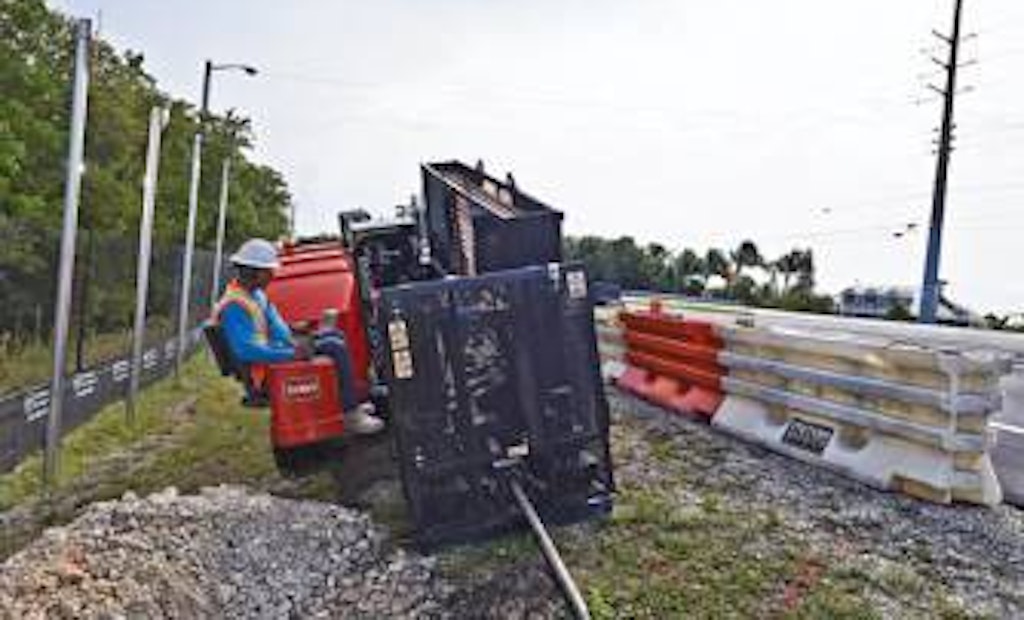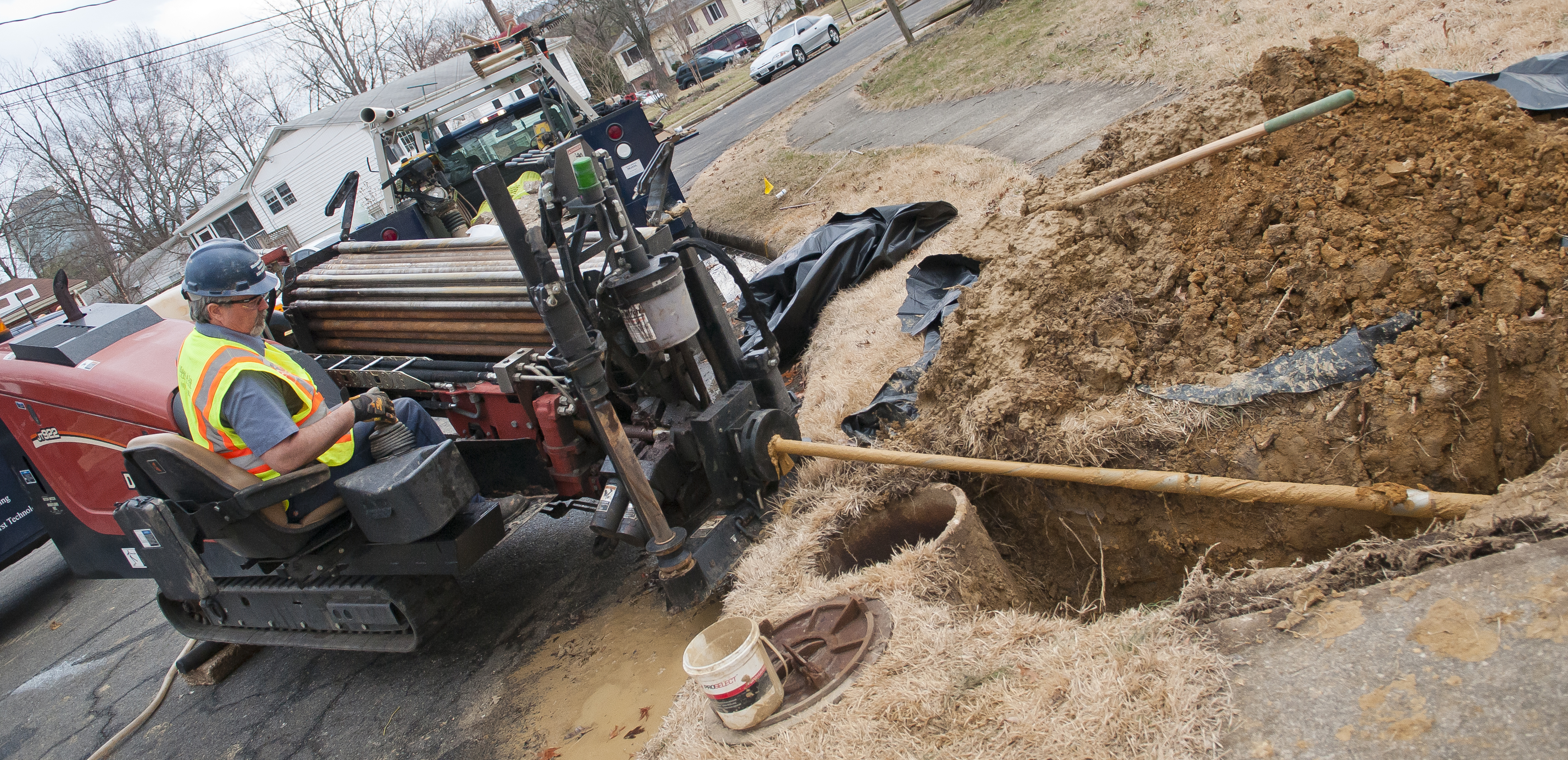
Interested in Relining/Rehab?
Get Relining/Rehab articles, news and videos right in your inbox! Sign up now.
Relining/Rehab + Get AlertsDirectional drilling goes back nearly a century. Today, advances in technology have allowed the process to become the go-to solution for situations when trenchless isn’t just the preferred option — it’s the only option. Here are some tips to help keep your directional drill in top shape for its next project, and many more to come:
1. Rotate your drill pipe
“Drill pipe is probably the most wearable item on a directional drill,” says Barry Jackson, HDD product training manager for Toro. “Drill pipe is not super expensive, but just keeping your pipe serviceable is important because it can make or break a directional bore.”
To help extend the pipe’s service life, Jackson recommends rotating it throughout the drill string.
“Instead of starting with the same piece of drill pipe every single time, you should rotate it throughout the string so that every piece of pipe gets even wear,” he says.
2. Use drilling fluid
“Drilling fluids will greatly reduce the amount of wear on the drill pipe, as well as the tooling on the bottom of the drill string,” Jackson says. “There are some in the industry who believe just because it’s a 100-foot bore as opposed to a 1,000-foot bore, they can do the project without drilling fluids. Or they’ve always worked without drilling fluids and will continue to do so. But that wears out the equipment. Things don’t last as long as they would for someone who actually uses the proper fluids to do a project.”
How much of a difference can drilling fluid — or “mud” as it is referred to in the industry — make? Jackson estimates that an operator can expect to see about 20 percent more life out of a drill by regularly using fluids. For the life expectancy of the tooling going into the ground, it is particularly crucial. “I would say at least 50 percent more life,” he says.
3. Know the ground conditions
It can be difficult to properly maintain equipment if it’s not even well suited for the job. Selecting the right tooling and fluids for a directional bore will not only help operators complete a job successfully, but also minimize the amount of wear on equipment.
“Of course you don’t want to use a bit that’s designed for dirt to drill through rock,” Jackson says. “Choose the right tools for the job and that will absolutely help the drill withstand the wear and tear.”
And the mud formula may have to be adjusted from job to job, as well.
“The variables can be extreme,” Jackson says. “You may have sand that’s super abrasive in one area and you’ll have to use a specific type of drilling fluid that reduces friction in that bore, and in a completely different bore you may not have any friction whatsoever. Yet you still need to add some type of slick properties to that drilling fluid in order to, for example, keep the drill pipe from sticking to a clay formation.”
If the machine’s gauges are showing excess rotary torque, it could be a sign the wrong type of fluid is being used, Jackson says.
4. Use quality makeup water
You may have selected the right formula of drilling fluid for the job, but if you’re not careful about your water source, you may still find yourself vulnerable to potential equipment damage.
“Chances are operators are pulling the water out of a fire hydrant or a creek,” Jackson says. “If the fire hydrant has sat dormant for a while and has not been flushed, they will get a ton of sand that has settled in those lines going directly into their mixing tank. That sand then gets mixed up in the drilling fluids and runs through the mud pump. If they’re pulling out of a creek, they need to make sure they’re using a strainer system for that water before it goes into the tank. Otherwise you end up with pebbles, small rocks and larger grains of sand in the mud system, and those will get pumped through the mud pump also.”
5. Make sure drill operators are properly trained
“Help avoid drill damage by ensuring your operators are properly trained and are familiar with the limits of a drill and the drill pipe,” Jackson says. “Staying within those limits, and not pushing the drill too fast, will help prevent pipe from coming back bent, or pipe that doesn’t come back at all.”

6. Troubleshooting tips during operation
Preplanning is key in directional drilling to avoid any problems in the field. But issues can arise, and oftentimes the cause can be plugged tooling. One example of something to look for mid-bore is a loss of cuttings, says Jaime Wines, HDD tooling product manager for Ditch Witch.
“If nothing is coming back, your tooling may be plugged off,” she says. “If you see a spike in mud pressure, you have to assume the tooling is plugged off. Another indicator something is wrong is if the beacon or sonde gets a reading that’s pretty hot. That’s another sign that the tooling is probably plugged off.”
7. Clean tooling regularly
“I think it’s a good practice to clean off your tooling when you pull it out. It will help your tooling last longer,” Wines says.
8. Protect threads
Along with consistent cleaning, Wines recommends protecting all threads on the equipment.
“The threads need to be protected, whether they use a thread cap or a lot of times you’ll even see people use tape. Anything they can put on them to protect them from gouging,” she says. “A lot of times, they’ll just throw them in the back of the trailer at the end of the day, which is fine, but first clean them off, tape them up or use the plug. Make sure you’re protecting those threads because they will last longer, and any time you have thread damage it’s damaging anything it’s connecting to down the drill string.”
9. Wear on drill bits
A common issue seen is operators not replacing the teeth on a drill bit soon enough.
“The more you keep those teeth in good shape, the more productive the drill is going to be for you,” she says. “Just watch those teeth and make sure they don’t get too much wear on them.”
10. Pre-job inspection
The pre-job inspection is particularly important in directional drilling since an equipment malfunction during a bore can mean having to start over at square one. On that inspection checklist should be items such as ensuring that all connections are tight and looking for hairline fractures or signs of excessive wear on tooling.
“If there’s a fracture on the tooling or if something is not tight, you could lose your bit downhole or the tooling could break,” Wines says. “It’s important to catch these things above ground because once you’re downhole if there’s a breakdown: 1.) You don’t know exactly what happened. And 2.) It’s very difficult to get these things out and still utilize that hole. A lot of times you have to start over. Thousands of dollars are at stake.”





